Attractions · Eastern Europe · Europe · Going Out · Poland · Regions
Inspirational places in Poland that you won’t want to miss
In choosing a travel destination, we often thirst for enriching experiences, beauty, palpable history and an injection of another culture. In fact T.S. Eliot said: “We shall not cease from exploration, and the end of all our exploring will be to arrive where we started and know the place for the first time.” So many elements of our travel experiences lead to surprising moments of awareness and inspiration.
 Insightfully chosen destinations can turn out to be far more than a relaxing, romantic holiday spot. There are a number of scientific studies that reveal that travel can gift us with more creativity, awareness and the ability to solve problems. These wonderful and somewhat curious effects of travel are especially strong when architecture, culture and creativity seamlessly blend together.
Wonderful, inspirational places
In a country which has been through a re-birth process, there is an abundance of wonderful places to inspire visitors. Poland is, today, the success story of Eastern Europe. The country has embraced its re-birth process, which is especially evident in its contemporary and restoration architecture, as well as in its love of culture, entertainment and hospitality.
The capital, Warsaw, oozes history and culture. The city has a gritty beauty, which is a blend of green spaces and wonderfully diverse architecture. Another Polish city that is inspirational is Gdańsk, with its special atmosphere and harbourside history it is truly unique.
Insightfully chosen destinations can turn out to be far more than a relaxing, romantic holiday spot. There are a number of scientific studies that reveal that travel can gift us with more creativity, awareness and the ability to solve problems. These wonderful and somewhat curious effects of travel are especially strong when architecture, culture and creativity seamlessly blend together.
Wonderful, inspirational places
In a country which has been through a re-birth process, there is an abundance of wonderful places to inspire visitors. Poland is, today, the success story of Eastern Europe. The country has embraced its re-birth process, which is especially evident in its contemporary and restoration architecture, as well as in its love of culture, entertainment and hospitality.
The capital, Warsaw, oozes history and culture. The city has a gritty beauty, which is a blend of green spaces and wonderfully diverse architecture. Another Polish city that is inspirational is Gdańsk, with its special atmosphere and harbourside history it is truly unique.
 Yet even though the charms of these two cities are rather different, they have one thing in common two theatres which have blended architecture, culture and creativity seamlessly together. These are the Nowy Teatr in Warsaw and the Gdańsk Shakespeare Theatre, and both are being featured on the Domo+ TV channel, which is Poland’s first and only thematic TV channel devoted to designing spaces.
The Gdańsk Shakespeare Theatre
Actor Kenneth Brannagh said: There are few cities in whole of Europe, that can be proud of such close connections with Shakespeare as Gdańsk can. The tradition of staging Shakespeares works is revived thanks to the Shakespeare Festival and to the idea of establishing the Shakespearean Theatre in Gdańsk.
What makes the Gdańsk Shakespeare Theatre especially remarkable is that it has been created by a partnership between a non-governmental organisation and local and regional authorities. In fact its creation is one of the most important events in the country since freedom was gained.
Yet even though the charms of these two cities are rather different, they have one thing in common two theatres which have blended architecture, culture and creativity seamlessly together. These are the Nowy Teatr in Warsaw and the Gdańsk Shakespeare Theatre, and both are being featured on the Domo+ TV channel, which is Poland’s first and only thematic TV channel devoted to designing spaces.
The Gdańsk Shakespeare Theatre
Actor Kenneth Brannagh said: There are few cities in whole of Europe, that can be proud of such close connections with Shakespeare as Gdańsk can. The tradition of staging Shakespeares works is revived thanks to the Shakespeare Festival and to the idea of establishing the Shakespearean Theatre in Gdańsk.
What makes the Gdańsk Shakespeare Theatre especially remarkable is that it has been created by a partnership between a non-governmental organisation and local and regional authorities. In fact its creation is one of the most important events in the country since freedom was gained.
 The Gdańsk Shakespeare Theatre is undoubtedly one of the world’s most ingenious theatres, complete with technical and architectural solutions that haven’t been employed, as yet, elsewhere.
The entrance hall plays the role of a foyer but so does a wooden room, which is suspended from the ceiling above it. Visitors can explore the corridors which leading to the different levels of galleries for the audience. Its interior has a labyrinth-like character.
The Gdańsk Shakespeare Theatre is undoubtedly one of the world’s most ingenious theatres, complete with technical and architectural solutions that haven’t been employed, as yet, elsewhere.
The entrance hall plays the role of a foyer but so does a wooden room, which is suspended from the ceiling above it. Visitors can explore the corridors which leading to the different levels of galleries for the audience. Its interior has a labyrinth-like character.
 The Gdańsk Shakespeare Theatre’s interior is actually a box structure, with corridors which are arranged in a parallel way. This design creates two naves surrounding the Main Hall, which houses the stage and the auditorium. Visitors can discover that the left and the right corridor mirror each other, leading to exactly the same places in the building.
The architect, Renato Rizzi, is definitely also a philosopher and mystic. He drew inspiration from St. Marys Church, the largest dominant architectural element of the Main Town. You can appreciate his references to it in the buttresses, which are visible on the body of the building, which are both aesthetically pleasing, as well as having the practical function of strengthening the walls. The walls, in this instance, are where the nearly 160-tonne construction of the retractable roof rests.
The Gdańsk Shakespeare Theatre’s interior is actually a box structure, with corridors which are arranged in a parallel way. This design creates two naves surrounding the Main Hall, which houses the stage and the auditorium. Visitors can discover that the left and the right corridor mirror each other, leading to exactly the same places in the building.
The architect, Renato Rizzi, is definitely also a philosopher and mystic. He drew inspiration from St. Marys Church, the largest dominant architectural element of the Main Town. You can appreciate his references to it in the buttresses, which are visible on the body of the building, which are both aesthetically pleasing, as well as having the practical function of strengthening the walls. The walls, in this instance, are where the nearly 160-tonne construction of the retractable roof rests.
 Currently the theatre’s retractable roof is the only construction of this type in the world. The open roof makes it possible to perform in daylight. So not only is it a fascinating architectural feature, but is also reminiscent of Renaissance theatres in Shakespearian days, or as it used to be done in Greek and Roman theatres. Additionally, such a set up is a novelty, as we are accustomed to stages being artificial lit, to leave the auditorium in darkness a practice which began in the second half of the 19th century.
Inside the theatre visitors can admire the internal roof sheathing, which is shaped as a stellar vault, a common feature of some of the largest Cathedrals, together with marble floors and handrails. Additionally, like Christian churches, the theatre building was built along the east-west axis with the stage located on the eastern side like an altar would be in the temples of the past.
The author of the design of the theatre, Renato Rizzi, designed the building as a distinct personality with its own autonomy. Yet it also endows the city with a new identity. The anthracite (coal) colour of the bricks is a symbol of the roots of the building growing from the ground, of it being rooted in the history of this place and this city.
Currently the theatre’s retractable roof is the only construction of this type in the world. The open roof makes it possible to perform in daylight. So not only is it a fascinating architectural feature, but is also reminiscent of Renaissance theatres in Shakespearian days, or as it used to be done in Greek and Roman theatres. Additionally, such a set up is a novelty, as we are accustomed to stages being artificial lit, to leave the auditorium in darkness a practice which began in the second half of the 19th century.
Inside the theatre visitors can admire the internal roof sheathing, which is shaped as a stellar vault, a common feature of some of the largest Cathedrals, together with marble floors and handrails. Additionally, like Christian churches, the theatre building was built along the east-west axis with the stage located on the eastern side like an altar would be in the temples of the past.
The author of the design of the theatre, Renato Rizzi, designed the building as a distinct personality with its own autonomy. Yet it also endows the city with a new identity. The anthracite (coal) colour of the bricks is a symbol of the roots of the building growing from the ground, of it being rooted in the history of this place and this city.
 However the colour and the heavyset, bulky body of the building gives an impression of being inaccessible, as if it is wearing a mask. The word mask derives from the Greek for persona. The Gdańsk Shakespeare Theatre can be viewed as a person, who like any other individual should never be judged by appearances. The concept is to trigger visitors to make a little effort, to step to the other side of the high, dark wall and enter the bright, luminous interiors to learn what is the most important part about this person.
The wall which surrounds the theatre is also modelled on the types of walls that surrounded cities during the Renaissance and Middle Ages. On one hand, this creates a symbolic miniature and a model of a city within a city, on the other hand, it enters into dialogue with a fragment of a medieval wall, which we can see across on Bogusławskiego Street. The seemingly inaccessible, heavyset, dark wall has yet another symbolic meaning its task is to protect the most precious thing inside it art and the values it presents and salvages.
In a way this symbolic meaning can be considered to be a theme throughout the wonderful re-birth of Poland.
However the colour and the heavyset, bulky body of the building gives an impression of being inaccessible, as if it is wearing a mask. The word mask derives from the Greek for persona. The Gdańsk Shakespeare Theatre can be viewed as a person, who like any other individual should never be judged by appearances. The concept is to trigger visitors to make a little effort, to step to the other side of the high, dark wall and enter the bright, luminous interiors to learn what is the most important part about this person.
The wall which surrounds the theatre is also modelled on the types of walls that surrounded cities during the Renaissance and Middle Ages. On one hand, this creates a symbolic miniature and a model of a city within a city, on the other hand, it enters into dialogue with a fragment of a medieval wall, which we can see across on Bogusławskiego Street. The seemingly inaccessible, heavyset, dark wall has yet another symbolic meaning its task is to protect the most precious thing inside it art and the values it presents and salvages.
In a way this symbolic meaning can be considered to be a theme throughout the wonderful re-birth of Poland.
 The Nowy Teatr, Warsaw
The Nowy Teatr in Warsaw is the brainchild of the multiple award-winning Polish theatre director, Krzysztof Warlikowski, along with some of his regular collaborators. Warlikowskis reputation in Europe is a result of, among other things, a very special understanding of the place of the audience in an art event. The philosophy of the theatre is that whoever has the capacity to think is a creative person.
Some of the Nowy Teatr projects involve Polish and International co-productions. A distinguishing feature of Nowy Teatr is that it is interdisciplinary, showcasing high art in non-obvious spaces or arrangements.
The space itself has a fascinating history. The site that is occupied today by the Nowy Teatr was used as a clay pit for brick production, in the latter part of the 19th century, around one-hundred and fifty years ago. Fifty years later the clay pit pond was filled in with garbage piles. Then a workshop building was erected on the edge of the old pit in 1927, which was used as a repair facility for municipal waste collection trucks.
The Nowy Teatr, Warsaw
The Nowy Teatr in Warsaw is the brainchild of the multiple award-winning Polish theatre director, Krzysztof Warlikowski, along with some of his regular collaborators. Warlikowskis reputation in Europe is a result of, among other things, a very special understanding of the place of the audience in an art event. The philosophy of the theatre is that whoever has the capacity to think is a creative person.
Some of the Nowy Teatr projects involve Polish and International co-productions. A distinguishing feature of Nowy Teatr is that it is interdisciplinary, showcasing high art in non-obvious spaces or arrangements.
The space itself has a fascinating history. The site that is occupied today by the Nowy Teatr was used as a clay pit for brick production, in the latter part of the 19th century, around one-hundred and fifty years ago. Fifty years later the clay pit pond was filled in with garbage piles. Then a workshop building was erected on the edge of the old pit in 1927, which was used as a repair facility for municipal waste collection trucks.
 The history of the Nowy Teatr started in 2008. At the beginning, the theatre rented a few small rooms from the Municipal Waste Removal Enterprise, but it became the sole user of the area, including the historical workshop, in 2012. This meant that an interdisciplinary culture centre, with an area of 9000 m2, was created.
The construction project for the Nowy Teatr International Cultural Centre has integrated the important factors into it that the historical workshop and a part of the office building will be modernised and adapted so as to make them suitable for a cultural and educational programme.
The most important part of the construction project is to revitalise the workshop building which has an area of about 2800 m2. The architectural form of the building will remain unchanged due to its historical monument status. The building, which was used as a maintenance facility for Municipal Waste equipment and vehicles until 2012, will turn into a multi-functional space used to house performances and displays of varying characters and scales.
The history of the Nowy Teatr started in 2008. At the beginning, the theatre rented a few small rooms from the Municipal Waste Removal Enterprise, but it became the sole user of the area, including the historical workshop, in 2012. This meant that an interdisciplinary culture centre, with an area of 9000 m2, was created.
The construction project for the Nowy Teatr International Cultural Centre has integrated the important factors into it that the historical workshop and a part of the office building will be modernised and adapted so as to make them suitable for a cultural and educational programme.
The most important part of the construction project is to revitalise the workshop building which has an area of about 2800 m2. The architectural form of the building will remain unchanged due to its historical monument status. The building, which was used as a maintenance facility for Municipal Waste equipment and vehicles until 2012, will turn into a multi-functional space used to house performances and displays of varying characters and scales.
 The interior, and in particular the auditorium, bears more resemblance to a film studio than a typical theatre. In addition to the stage, the former workshop building also includes a rehearsal room, a two-storey auxiliary section with dressing rooms, make-up rooms and technical areas (including storage space), and a spacious foyer.
After the makeover, the building will be active year round. The new life of Nowy Teatr will be to produce a creative offer for the people of the district of Mokotów, and the whole of Warsaw, that will make them more active. This will reflect the philosophy of the place, which says that whoever can think is a creative person.
In the summer, the open-air area will make it possible to create a centre-within-a-centre, an additional space for art and life. The outdoors area will be meant for installation art. The centre will invite artists, architects and designers interested in the testing of new ways to use urban space, e.g. by building intriguing spatial installations. The whole area will be fenced but the fence will not be typical. It will allow opening of modules, and thanks to its openwork nature, meandering course, and inclusion of integrated benches, will be an element that connects rather than divides.
The interior, and in particular the auditorium, bears more resemblance to a film studio than a typical theatre. In addition to the stage, the former workshop building also includes a rehearsal room, a two-storey auxiliary section with dressing rooms, make-up rooms and technical areas (including storage space), and a spacious foyer.
After the makeover, the building will be active year round. The new life of Nowy Teatr will be to produce a creative offer for the people of the district of Mokotów, and the whole of Warsaw, that will make them more active. This will reflect the philosophy of the place, which says that whoever can think is a creative person.
In the summer, the open-air area will make it possible to create a centre-within-a-centre, an additional space for art and life. The outdoors area will be meant for installation art. The centre will invite artists, architects and designers interested in the testing of new ways to use urban space, e.g. by building intriguing spatial installations. The whole area will be fenced but the fence will not be typical. It will allow opening of modules, and thanks to its openwork nature, meandering course, and inclusion of integrated benches, will be an element that connects rather than divides.
 The design for the renovation of the workshop and office buildings was prepared by the architecture firm Piotr Fortuna Architekci of Gdynia. The interior designs were prepared by the stage designer Małgorzata Szczęśniak, the author of the spaces in all of Krzysztof Warlikowskis performances (on behalf of Nowy Teatr), and Łukasz Kwietniewski. The landscaping of the outdoor spaces was designed by Łukasz Kowalski and Karolina Samborska (Pracownia La.Wa).
Images #1 and #2: Shutterstock
Disclosure: This post is sponsored by Polish TV channel Domo+.
The design for the renovation of the workshop and office buildings was prepared by the architecture firm Piotr Fortuna Architekci of Gdynia. The interior designs were prepared by the stage designer Małgorzata Szczęśniak, the author of the spaces in all of Krzysztof Warlikowskis performances (on behalf of Nowy Teatr), and Łukasz Kwietniewski. The landscaping of the outdoor spaces was designed by Łukasz Kowalski and Karolina Samborska (Pracownia La.Wa).
Images #1 and #2: Shutterstock
Disclosure: This post is sponsored by Polish TV channel Domo+.
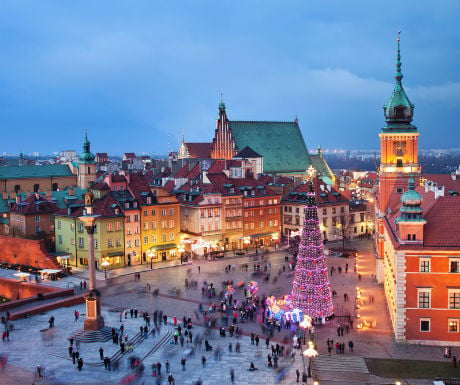 Insightfully chosen destinations can turn out to be far more than a relaxing, romantic holiday spot. There are a number of scientific studies that reveal that travel can gift us with more creativity, awareness and the ability to solve problems. These wonderful and somewhat curious effects of travel are especially strong when architecture, culture and creativity seamlessly blend together.
Wonderful, inspirational places
In a country which has been through a re-birth process, there is an abundance of wonderful places to inspire visitors. Poland is, today, the success story of Eastern Europe. The country has embraced its re-birth process, which is especially evident in its contemporary and restoration architecture, as well as in its love of culture, entertainment and hospitality.
The capital, Warsaw, oozes history and culture. The city has a gritty beauty, which is a blend of green spaces and wonderfully diverse architecture. Another Polish city that is inspirational is Gdańsk, with its special atmosphere and harbourside history it is truly unique.
Insightfully chosen destinations can turn out to be far more than a relaxing, romantic holiday spot. There are a number of scientific studies that reveal that travel can gift us with more creativity, awareness and the ability to solve problems. These wonderful and somewhat curious effects of travel are especially strong when architecture, culture and creativity seamlessly blend together.
Wonderful, inspirational places
In a country which has been through a re-birth process, there is an abundance of wonderful places to inspire visitors. Poland is, today, the success story of Eastern Europe. The country has embraced its re-birth process, which is especially evident in its contemporary and restoration architecture, as well as in its love of culture, entertainment and hospitality.
The capital, Warsaw, oozes history and culture. The city has a gritty beauty, which is a blend of green spaces and wonderfully diverse architecture. Another Polish city that is inspirational is Gdańsk, with its special atmosphere and harbourside history it is truly unique.
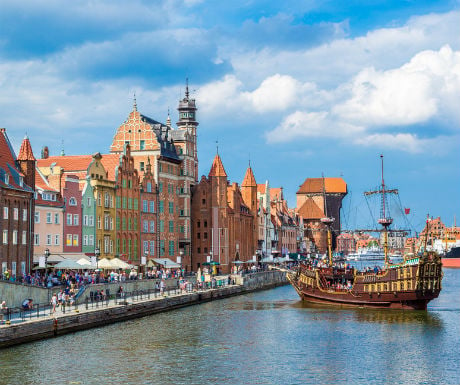 Yet even though the charms of these two cities are rather different, they have one thing in common two theatres which have blended architecture, culture and creativity seamlessly together. These are the Nowy Teatr in Warsaw and the Gdańsk Shakespeare Theatre, and both are being featured on the Domo+ TV channel, which is Poland’s first and only thematic TV channel devoted to designing spaces.
The Gdańsk Shakespeare Theatre
Actor Kenneth Brannagh said: There are few cities in whole of Europe, that can be proud of such close connections with Shakespeare as Gdańsk can. The tradition of staging Shakespeares works is revived thanks to the Shakespeare Festival and to the idea of establishing the Shakespearean Theatre in Gdańsk.
What makes the Gdańsk Shakespeare Theatre especially remarkable is that it has been created by a partnership between a non-governmental organisation and local and regional authorities. In fact its creation is one of the most important events in the country since freedom was gained.
Yet even though the charms of these two cities are rather different, they have one thing in common two theatres which have blended architecture, culture and creativity seamlessly together. These are the Nowy Teatr in Warsaw and the Gdańsk Shakespeare Theatre, and both are being featured on the Domo+ TV channel, which is Poland’s first and only thematic TV channel devoted to designing spaces.
The Gdańsk Shakespeare Theatre
Actor Kenneth Brannagh said: There are few cities in whole of Europe, that can be proud of such close connections with Shakespeare as Gdańsk can. The tradition of staging Shakespeares works is revived thanks to the Shakespeare Festival and to the idea of establishing the Shakespearean Theatre in Gdańsk.
What makes the Gdańsk Shakespeare Theatre especially remarkable is that it has been created by a partnership between a non-governmental organisation and local and regional authorities. In fact its creation is one of the most important events in the country since freedom was gained.
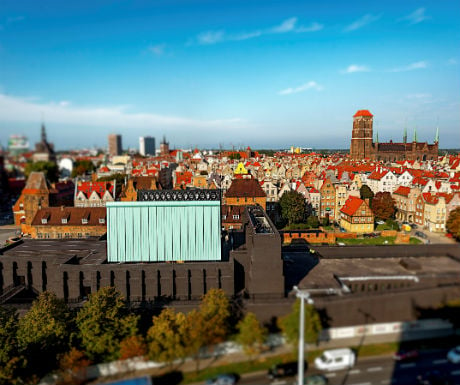 The Gdańsk Shakespeare Theatre is undoubtedly one of the world’s most ingenious theatres, complete with technical and architectural solutions that haven’t been employed, as yet, elsewhere.
The entrance hall plays the role of a foyer but so does a wooden room, which is suspended from the ceiling above it. Visitors can explore the corridors which leading to the different levels of galleries for the audience. Its interior has a labyrinth-like character.
The Gdańsk Shakespeare Theatre is undoubtedly one of the world’s most ingenious theatres, complete with technical and architectural solutions that haven’t been employed, as yet, elsewhere.
The entrance hall plays the role of a foyer but so does a wooden room, which is suspended from the ceiling above it. Visitors can explore the corridors which leading to the different levels of galleries for the audience. Its interior has a labyrinth-like character.
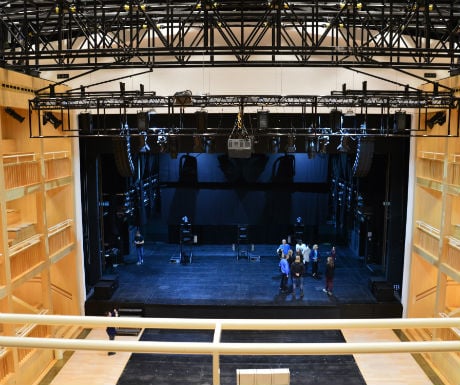 The Gdańsk Shakespeare Theatre’s interior is actually a box structure, with corridors which are arranged in a parallel way. This design creates two naves surrounding the Main Hall, which houses the stage and the auditorium. Visitors can discover that the left and the right corridor mirror each other, leading to exactly the same places in the building.
The architect, Renato Rizzi, is definitely also a philosopher and mystic. He drew inspiration from St. Marys Church, the largest dominant architectural element of the Main Town. You can appreciate his references to it in the buttresses, which are visible on the body of the building, which are both aesthetically pleasing, as well as having the practical function of strengthening the walls. The walls, in this instance, are where the nearly 160-tonne construction of the retractable roof rests.
The Gdańsk Shakespeare Theatre’s interior is actually a box structure, with corridors which are arranged in a parallel way. This design creates two naves surrounding the Main Hall, which houses the stage and the auditorium. Visitors can discover that the left and the right corridor mirror each other, leading to exactly the same places in the building.
The architect, Renato Rizzi, is definitely also a philosopher and mystic. He drew inspiration from St. Marys Church, the largest dominant architectural element of the Main Town. You can appreciate his references to it in the buttresses, which are visible on the body of the building, which are both aesthetically pleasing, as well as having the practical function of strengthening the walls. The walls, in this instance, are where the nearly 160-tonne construction of the retractable roof rests.
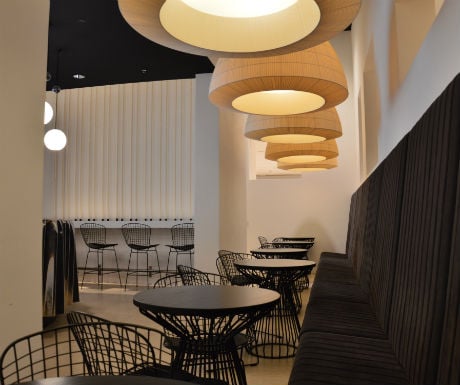 Currently the theatre’s retractable roof is the only construction of this type in the world. The open roof makes it possible to perform in daylight. So not only is it a fascinating architectural feature, but is also reminiscent of Renaissance theatres in Shakespearian days, or as it used to be done in Greek and Roman theatres. Additionally, such a set up is a novelty, as we are accustomed to stages being artificial lit, to leave the auditorium in darkness a practice which began in the second half of the 19th century.
Inside the theatre visitors can admire the internal roof sheathing, which is shaped as a stellar vault, a common feature of some of the largest Cathedrals, together with marble floors and handrails. Additionally, like Christian churches, the theatre building was built along the east-west axis with the stage located on the eastern side like an altar would be in the temples of the past.
The author of the design of the theatre, Renato Rizzi, designed the building as a distinct personality with its own autonomy. Yet it also endows the city with a new identity. The anthracite (coal) colour of the bricks is a symbol of the roots of the building growing from the ground, of it being rooted in the history of this place and this city.
Currently the theatre’s retractable roof is the only construction of this type in the world. The open roof makes it possible to perform in daylight. So not only is it a fascinating architectural feature, but is also reminiscent of Renaissance theatres in Shakespearian days, or as it used to be done in Greek and Roman theatres. Additionally, such a set up is a novelty, as we are accustomed to stages being artificial lit, to leave the auditorium in darkness a practice which began in the second half of the 19th century.
Inside the theatre visitors can admire the internal roof sheathing, which is shaped as a stellar vault, a common feature of some of the largest Cathedrals, together with marble floors and handrails. Additionally, like Christian churches, the theatre building was built along the east-west axis with the stage located on the eastern side like an altar would be in the temples of the past.
The author of the design of the theatre, Renato Rizzi, designed the building as a distinct personality with its own autonomy. Yet it also endows the city with a new identity. The anthracite (coal) colour of the bricks is a symbol of the roots of the building growing from the ground, of it being rooted in the history of this place and this city.
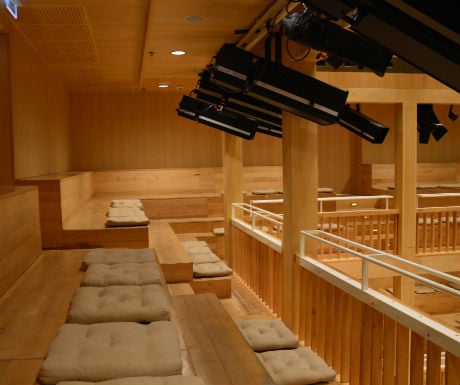 However the colour and the heavyset, bulky body of the building gives an impression of being inaccessible, as if it is wearing a mask. The word mask derives from the Greek for persona. The Gdańsk Shakespeare Theatre can be viewed as a person, who like any other individual should never be judged by appearances. The concept is to trigger visitors to make a little effort, to step to the other side of the high, dark wall and enter the bright, luminous interiors to learn what is the most important part about this person.
The wall which surrounds the theatre is also modelled on the types of walls that surrounded cities during the Renaissance and Middle Ages. On one hand, this creates a symbolic miniature and a model of a city within a city, on the other hand, it enters into dialogue with a fragment of a medieval wall, which we can see across on Bogusławskiego Street. The seemingly inaccessible, heavyset, dark wall has yet another symbolic meaning its task is to protect the most precious thing inside it art and the values it presents and salvages.
In a way this symbolic meaning can be considered to be a theme throughout the wonderful re-birth of Poland.
However the colour and the heavyset, bulky body of the building gives an impression of being inaccessible, as if it is wearing a mask. The word mask derives from the Greek for persona. The Gdańsk Shakespeare Theatre can be viewed as a person, who like any other individual should never be judged by appearances. The concept is to trigger visitors to make a little effort, to step to the other side of the high, dark wall and enter the bright, luminous interiors to learn what is the most important part about this person.
The wall which surrounds the theatre is also modelled on the types of walls that surrounded cities during the Renaissance and Middle Ages. On one hand, this creates a symbolic miniature and a model of a city within a city, on the other hand, it enters into dialogue with a fragment of a medieval wall, which we can see across on Bogusławskiego Street. The seemingly inaccessible, heavyset, dark wall has yet another symbolic meaning its task is to protect the most precious thing inside it art and the values it presents and salvages.
In a way this symbolic meaning can be considered to be a theme throughout the wonderful re-birth of Poland.
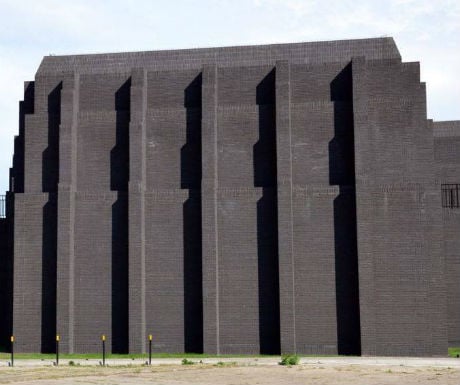 The Nowy Teatr, Warsaw
The Nowy Teatr in Warsaw is the brainchild of the multiple award-winning Polish theatre director, Krzysztof Warlikowski, along with some of his regular collaborators. Warlikowskis reputation in Europe is a result of, among other things, a very special understanding of the place of the audience in an art event. The philosophy of the theatre is that whoever has the capacity to think is a creative person.
Some of the Nowy Teatr projects involve Polish and International co-productions. A distinguishing feature of Nowy Teatr is that it is interdisciplinary, showcasing high art in non-obvious spaces or arrangements.
The space itself has a fascinating history. The site that is occupied today by the Nowy Teatr was used as a clay pit for brick production, in the latter part of the 19th century, around one-hundred and fifty years ago. Fifty years later the clay pit pond was filled in with garbage piles. Then a workshop building was erected on the edge of the old pit in 1927, which was used as a repair facility for municipal waste collection trucks.
The Nowy Teatr, Warsaw
The Nowy Teatr in Warsaw is the brainchild of the multiple award-winning Polish theatre director, Krzysztof Warlikowski, along with some of his regular collaborators. Warlikowskis reputation in Europe is a result of, among other things, a very special understanding of the place of the audience in an art event. The philosophy of the theatre is that whoever has the capacity to think is a creative person.
Some of the Nowy Teatr projects involve Polish and International co-productions. A distinguishing feature of Nowy Teatr is that it is interdisciplinary, showcasing high art in non-obvious spaces or arrangements.
The space itself has a fascinating history. The site that is occupied today by the Nowy Teatr was used as a clay pit for brick production, in the latter part of the 19th century, around one-hundred and fifty years ago. Fifty years later the clay pit pond was filled in with garbage piles. Then a workshop building was erected on the edge of the old pit in 1927, which was used as a repair facility for municipal waste collection trucks.
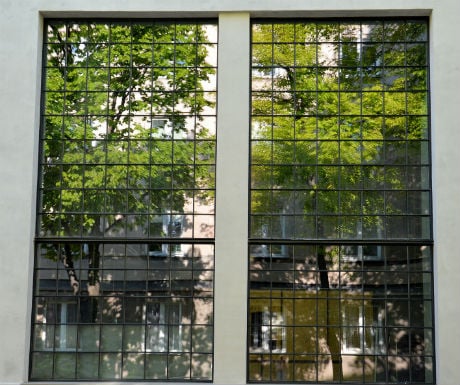 The history of the Nowy Teatr started in 2008. At the beginning, the theatre rented a few small rooms from the Municipal Waste Removal Enterprise, but it became the sole user of the area, including the historical workshop, in 2012. This meant that an interdisciplinary culture centre, with an area of 9000 m2, was created.
The construction project for the Nowy Teatr International Cultural Centre has integrated the important factors into it that the historical workshop and a part of the office building will be modernised and adapted so as to make them suitable for a cultural and educational programme.
The most important part of the construction project is to revitalise the workshop building which has an area of about 2800 m2. The architectural form of the building will remain unchanged due to its historical monument status. The building, which was used as a maintenance facility for Municipal Waste equipment and vehicles until 2012, will turn into a multi-functional space used to house performances and displays of varying characters and scales.
The history of the Nowy Teatr started in 2008. At the beginning, the theatre rented a few small rooms from the Municipal Waste Removal Enterprise, but it became the sole user of the area, including the historical workshop, in 2012. This meant that an interdisciplinary culture centre, with an area of 9000 m2, was created.
The construction project for the Nowy Teatr International Cultural Centre has integrated the important factors into it that the historical workshop and a part of the office building will be modernised and adapted so as to make them suitable for a cultural and educational programme.
The most important part of the construction project is to revitalise the workshop building which has an area of about 2800 m2. The architectural form of the building will remain unchanged due to its historical monument status. The building, which was used as a maintenance facility for Municipal Waste equipment and vehicles until 2012, will turn into a multi-functional space used to house performances and displays of varying characters and scales.
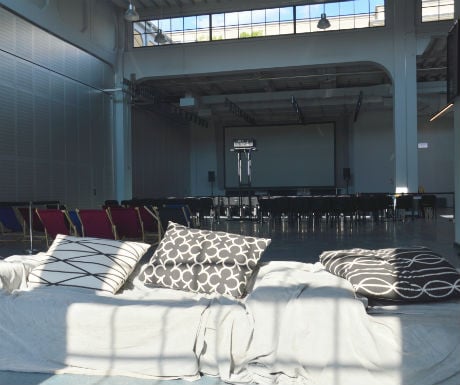 The interior, and in particular the auditorium, bears more resemblance to a film studio than a typical theatre. In addition to the stage, the former workshop building also includes a rehearsal room, a two-storey auxiliary section with dressing rooms, make-up rooms and technical areas (including storage space), and a spacious foyer.
After the makeover, the building will be active year round. The new life of Nowy Teatr will be to produce a creative offer for the people of the district of Mokotów, and the whole of Warsaw, that will make them more active. This will reflect the philosophy of the place, which says that whoever can think is a creative person.
In the summer, the open-air area will make it possible to create a centre-within-a-centre, an additional space for art and life. The outdoors area will be meant for installation art. The centre will invite artists, architects and designers interested in the testing of new ways to use urban space, e.g. by building intriguing spatial installations. The whole area will be fenced but the fence will not be typical. It will allow opening of modules, and thanks to its openwork nature, meandering course, and inclusion of integrated benches, will be an element that connects rather than divides.
The interior, and in particular the auditorium, bears more resemblance to a film studio than a typical theatre. In addition to the stage, the former workshop building also includes a rehearsal room, a two-storey auxiliary section with dressing rooms, make-up rooms and technical areas (including storage space), and a spacious foyer.
After the makeover, the building will be active year round. The new life of Nowy Teatr will be to produce a creative offer for the people of the district of Mokotów, and the whole of Warsaw, that will make them more active. This will reflect the philosophy of the place, which says that whoever can think is a creative person.
In the summer, the open-air area will make it possible to create a centre-within-a-centre, an additional space for art and life. The outdoors area will be meant for installation art. The centre will invite artists, architects and designers interested in the testing of new ways to use urban space, e.g. by building intriguing spatial installations. The whole area will be fenced but the fence will not be typical. It will allow opening of modules, and thanks to its openwork nature, meandering course, and inclusion of integrated benches, will be an element that connects rather than divides.
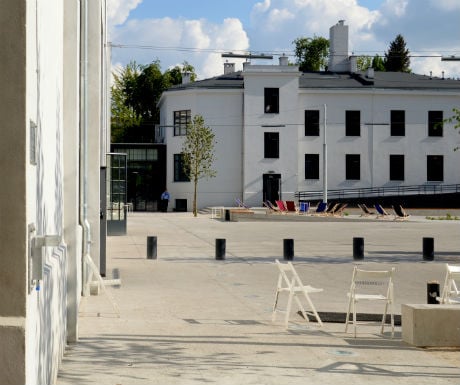 The design for the renovation of the workshop and office buildings was prepared by the architecture firm Piotr Fortuna Architekci of Gdynia. The interior designs were prepared by the stage designer Małgorzata Szczęśniak, the author of the spaces in all of Krzysztof Warlikowskis performances (on behalf of Nowy Teatr), and Łukasz Kwietniewski. The landscaping of the outdoor spaces was designed by Łukasz Kowalski and Karolina Samborska (Pracownia La.Wa).
Images #1 and #2: Shutterstock
Disclosure: This post is sponsored by Polish TV channel Domo+.
The design for the renovation of the workshop and office buildings was prepared by the architecture firm Piotr Fortuna Architekci of Gdynia. The interior designs were prepared by the stage designer Małgorzata Szczęśniak, the author of the spaces in all of Krzysztof Warlikowskis performances (on behalf of Nowy Teatr), and Łukasz Kwietniewski. The landscaping of the outdoor spaces was designed by Łukasz Kowalski and Karolina Samborska (Pracownia La.Wa).
Images #1 and #2: Shutterstock
Disclosure: This post is sponsored by Polish TV channel Domo+.Did you enjoy this article?
Receive similar content direct to your inbox.


Absolutely stunning
Never been before but now it’s top if my destinations to visit
Thankyou for the amazing introduction
i love polish food,so would love to visit and sample more traditional home cooked foods,and see the sights and history of the country,some great photos of the country here x
Poznan Wroclaw Cracow did not like Warsaw, Poznan is a university town, Wroclaw very colourful. Cracow well known a it touristy
Gdynia, Sopot and Gdansk are the perfect Tri-city! You can find there something modern, old and fashionable.
As someone who was born and raised in Poland I would like to recommend visiting our beautiful smaller towns as well! For example Wałbrzych, the city where I grew up, has not only interesting and rich history but also beautiful nature! You will find there endless hiking opportunities in Sudety mountains, beautiful walking paths through magical forest, great and modern museum of mining (called “Stara Kopalnia”), amazing castles, lakes etc. Of course, the main attraction of Wałbrzych is Castle Książ, one of the most beautiful castles in Poland! I really recommend exploring of the beaten path. That way, you can truly understand local living, try authentic cuisine and enjoy real Poland.
Thanks for you article Paul!